See the pages on early modern astrology, on early modern medicine, and scholarship on Forman’s and Napier’s casebooks for readings on those topics. This page draws together studies of Forman and Napier; readings on medical records, cases, and observations; readings on the patient in history.
Studies of Forman and Napier
For introductory biographical information, see our pages on Forman and Napier.
- Hadass, Ofer (2018) Medicine, Religion, and Magic in Early Stuart England: Richard Napier’s Medical Practice, University Park, PA: Penn State University Press.
- Hawkins, Michael, Robert Ralley, and John Young (2014) ‘A Medical Panorama: The Casebooks Project’, in Book 2.0 (vol. 4): 61–69.
- Kassell, Lauren (1999) ‘How to Read Simon Forman’s Casebooks: Medicine, Astrology and Gender in Elizabethan London’, Social History of Medicine, 12: 3–18.
- Kassell, Lauren (2005) Medicine and Magic in Elizabethan London: Simon Forman, Astrologer, Alchemist, and Physician, Oxford: Oxford University Press.
- Kassell, Lauren (2011) ‘Simon Forman: The Astrologer’s Tables’, History Today, 61 (issue 9): 18–25.
- Kassell, Lauren (2018) ‘Fruitful Bodies and Astrological Medicine’, in Reproduction: Antiquity to the Present Day, ed. Nick Hopwood, Rebecca Flemming, and Lauren Kassell, Cambridge: Cambridge University Press, 223–40.
- MacDonald, Michael (1981) Mystical Bedlam: Madness, Anxiety, and Healing in Seventeenth-Century England, Cambridge: Cambridge University Press.
- Rowse, A. L. (1974) Simon Forman: Sex and Society in Shakespeare’s Age, London: Weidenfeld & Nicolson.
- Sawyer, Ronald (1986) ‘Patients, Healers and Disease in the Southeast Midlands, 1597–1634’, PhD thesis, University of Wisconsin.
- Traister, Barbara (1989) ‘Medicine and Astrology in Elizabethan England: The Case of Simon Forman’, Transactions and Studies of the College of Physicians of Philadelphia, II: 279–97.
- Traister, Barbara (2001) The Notorious Astrological Physician of London: Works and Days of Simon Forman, Chicago, IL: University of Chicago Press.
Readings on medical records, cases and observations
See also many of the readings in the list below on patients.
- Bresadola, Marco (2011) ‘A Physician and a Man of Science: Patients, Physicians and Diseases in Marcello Malpighi’s Medical Practice’, Bull Hist Med, 85: 193–221.
- Crisciani, Chiara (2005) ‘Histories, Stories, Exempla, and Anecdotes: Michele Savonarola from Latin to Vernacular’, in Historia: Empiricism and Erudition in Early-Modern Europe, ed. Gianna Pomata and Nancy G. Siraisi, Cambridge, MA: MIT Press, 297–324.
- Daston, Lorraine (2008) ‘On Scientific Observation’, Isis, 99: 97–110.
- Daston, Lorraine and Elizabeth Lunbeck, eds (2011) Histories of Scientific Observation, Chicago, IL: Chicago University Press.
- De Renzi, Silvia (2011) ‘A Career in Manuscripts: Genres and Purposes of a Physician’s Writing in Rome, 1600–1630’, Italian Studies, 66: 234–48.
- Dinges, Martin, Kay Peter Jankrift, Sabine Schlegelmilch and Michael Stolberg (eds.), trans. Margot Saar (2015) Medical Practice, 1600–1900: Physicians and their Patients, Leiden: Brill (Clio medica: perspectives in medical humanities, vol. 96).
- Entralgo, Pedro Laín (1950) La historia clínica: historia y teoría del relato patográfico, Madrid: Consejo Superior de Investigaciones Científicas.
- Forrester, John (1996) ‘If p, Then What? Thinking in Cases’, History of the Human Sciences, 9: 1–25.
- Hess, Volker and J. Andrew Mendelsohn (2010) ‘Case and Series: Medical Knowledge and Paper Technology, 1600–1900’, History of Science, 48: 287–314.
- Kassell, Lauren (2014) ‘Casebooks in Early Modern England: Astrology, Medicine and Written Records’, Bulletin of the History of Medicine, 88: 595–625.
- Kassell, Lauren (2016) ‘Paper Technologies, Digital Technologies: Working with Early Modern Medical Records’, in The Edinburgh Companion to the Critical Medical Humanities ed. Anne Whitehead, Angela Woods, Sarah Atkinson, Jane Macnaughton and Jennifer Richards, Edinburgh: Edinburgh University Press, 2016, 120–35.
- Marks, Harry (2006) ‘“Until the Sun of Science … the true Apollo of Medicine has risen”: Collective Investigation in Britain and America, 1880–1910’, Medical History, 50: 157–66.
- Nance, Brian (2001) The Art of Medical Portraiture: Turquet de Mayerne as Baroque Physician, Amsterdam: Rodopi.
- Park, Katharine (1999) ‘Natural Particulars: Medical Epistemology, Practice, and the Literature of Healing Springs’, in Natural Particulars: Nature and the Disciplines in Renaissance Europe, ed. Anthony Grafton and Nancy Siraisi, Cambridge, MA: MIT Press, 347–67.
- Pomata, Gianna (2005) ‘Praxis Historialis: The Uses of Historia in Early-Modern Medicine’, in Historia: Empiricism and Erudition in Early-Modern Europe, ed. Pomata and Siraisi, Cambridge, MA: MIT Press, 105–46.
- Pomata, Gianna (2010) ‘Sharing Cases: The Observationes in Early Modern Medicine’, Early Science and Medicine, 15: 193–236.
- Risse, Guenter B. and John Harley Warner (1992) ‘Reconstructing Clinical Activities: Patient Records in Medical History’, Social History of Medicine, 5: 183–205.
- Stolberg, Michael (2013) ‘Empiricism in Sixteenth-Century Medical Practice: The Notebooks of Georg Handsch’, Early Science and Medicine, 18: 487–516.
- Stolberg, Michael (2017) ‘A Sixteenth-Century Physician and His Patients: The Practice Journal of Hiob Finzel, 1565–1589’, Social History of Medicine, hkx063, https://doi.org/10.1093/shm/hkx063.
- Sturdy, Steve (2007) ‘Knowing Cases: Biomedicine in Edinburgh, 1887–1920’, Social Studies of Science, 37: 659–89.
- Trevor-Roper, Hugh (2006) Europe’s Physician: The Various Life of Sir Theodore de Mayerne, New Haven and London: Yale University Press.
- Warner, John Harley (1999) ‘The Uses of Patient Records by Historians—Patterns, Possibilities and Perplexities’, Health & History, 1: 101–11.
- Weisz, George (2001) ‘Reconstructing Paris Medicine’, Bulletin of the History of Medicine, 75: 105–119. An essay review of Caroline Hannaway and Ann F. La Berge, eds., Constructing Paris Medicine (1998) and a good starting point on this major topic.
- Williams, Katherine (1990) ‘Hysteria in Seventeenth-Century Case Records and Unpublished Manuscripts’, History of Psychiatry, 1: 383–401.
Readings on the patient in history
See also many of the above readings on medical records, cases, and observations.
- Armstrong, David (1984) ‘The Patient’s View’, Social Science and Medicine, 18: 737–44.
- Beier, Lucinda McCray (1987) Sufferers and Healers: The Experience of Illness in Seventeenth-Century England, London: Routledge.
- Bylebyl, Jerome (1993) ‘The Manifest and the Hidden in the Renaissance Clinic’, in Medicine and the Five Senses, ed. W. F. Bynum and Roy Porter, Cambridge: Cambridge University Press: 40–60.
- Churchill, Wendy (2012) Female Patients in Early Modern Britain: Gender, Diagnosis, and Treatment, Farnham, Surrey: Ashgate.
- Condrau, Flurin (2007) ‘The Patient’s View Meets the Clinical Gaze’, Social History of Medicine, 20: 525–40.
- Davis, Gayle (2008) “The Cruel Madness of Love”: Sex, Syphilis and Psychiatry in Scotland, 1880–1930, Amsterdam and New York: Rodopi.
- Duden, Barbara (1991 [1987]) The Woman Beneath the Skin: A Doctor’s Patients in Eighteenth-Century Germany, trans. Thomas Dunlap, Cambridge, MA: Harvard University Press.
- Fissell, Mary (1991) ‘The Disappearance of the Patient’s Narrative and the Invention of Hospital Medicine’, in British Medicine in an Age of Reform, ed. Andrew Wear and Roger French, London: Routledge: 92–109.
- Jewson, N. D. (1976) ‘The Disappearance of the Sick-Man from Medical Cosmology, 1770–1870,’ Sociology, 10: 225–44.
- Porter, Dorothy and Roy Porter (1989) Patient’s Progress: Doctors and Doctoring in Eighteenth-Century England, Oxford: Polity Press.
- Porter, Roy (1985) ‘The Patient’s View: Doing Medical History from Below’, Theory and Society, 14: 175–98.
- Porter, Roy (1992) ‘The Patient in England, c. 1660–c. 1800’, in Medicine in Society, ed. Andrew Wear, Cambridge: Cambridge University Press: 91–118.
- Rieder, Philip (2010) La figure du patient au XVIIIe siècle, Geneva: Librarie Droz.
- Smith, Lisa Wynne (2011) ‘Secrets of Place: The Medical Casebooks of Vivant-Augustin Ganiare’, in Secrets and Knowledge in Medicine and Science, 1500–1800, ed. Elaine Leong and Alisha Rankin, Farnham and Burlington, VT: Ashgate: 213–31.
- Stolberg, Michael (2011 [2003]) Experiencing Illness and the Sick Body in Early Modern Europe, trans. Leonhard Unglaub and Logan Kennedy, Basingstoke: Palgrave.
- Stowe, Steven M. (2004) Doctoring the South: Southern Physicians and Everyday Medicine in the Mid-nineteenth Century, Chapel Hill, NC: University of North Carolina Press.
- Weisser, Olivia (2009) ‘Boils, Pushes and Wheals: Reading Bumps on the Body in Early Modern England’, Social History of Medicine, 22: 321–39.
- Weisser, Olivia (2015) Ill Composed: Sickness, Gender and Belief in Early Modern England, New Haven and London: Yale University Press.


